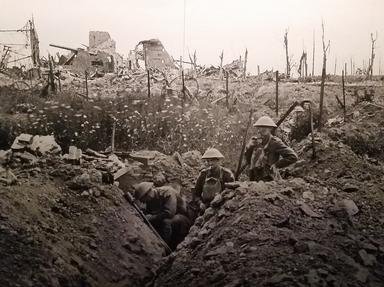Quiz Answer Key and Fun Facts
1. The assassination of Archduke Franz Ferdinand by this Bosnian student led to the outbreak of the First World War. Name this assassin.
2. Which French commander-in-chief ordered offensives into Alsace and Lorraine during the real war?
3. In 1917 the Austro-German forces launched a surprise attack on the Italians that led to a terrible rout and cost Italy 265,000 prisoners. At what place did this incident occur?
4. Which French squadron was comprised of American volunteers during the Great War?
5. Who replaced Sir John French as the commander in chief of British forces during the Great War?
6. Which Italian commander, after the unsuccessful campaign of Trentino, launched a counteroffensive against the Austrians in 1916?
7. This German general was highly criticized because he made modifications to the Schlieffen Plan. Who is the person referred to?
8. What was the official name for the third battle of the Piave?
9. Which German admiral commanded the naval squadron in the battle of Coronel?
10. Germany's final offensive on the Western Front during World War I is better known as?
11. Operation Blucher-Yorck is popularly known as the battle of ______?
12. The 2nd Battle of the Somme is also known as?
13. What chemical weapon was used by the Germans at the battle of Bolimov?
14. What chemical weapon was used by the French under the codename Papite?
15. What name was given to the British volunteer armies that fought in the war?
16. Which German general's army emerged victorious in the battle of Mons in 1914?
17. What was the number of the room in the British Admiralty building where cryptanalysis staff deciphered German naval signals?
18. The deciphering of what mail caused widespread outrage in the U.S. in 1917?
19. How many casualties were there among the Indian troops in the war who were rendered by Great Britain?
20. At which Turkish place did four British divisions land in 1915 to capture the Anafarta Hills?
21. What joint Allied operation was launched in 1918-19 to stabilize the Eastern Front following the Russian Revolution?
22. What unsuccessful Australian operation was the scene of fierce battle between the ANZAC corps and the Turkish force at Gallipoli in 1915?
23. What armoured-cruiser was sent by General Von Spee to bombard the Falkland Islands in December 1914?
24. Which Russian general committed suicide after the battle of Tannenberg?
25. What battle was fought between the German and Russian forces in 1915 at Galicia which resulted in defeat of the Russian troops?
Source: Author
swashbuckler
This quiz was reviewed by FunTrivia editor
bloomsby before going online.
Any errors found in FunTrivia content are routinely corrected through our feedback system.

